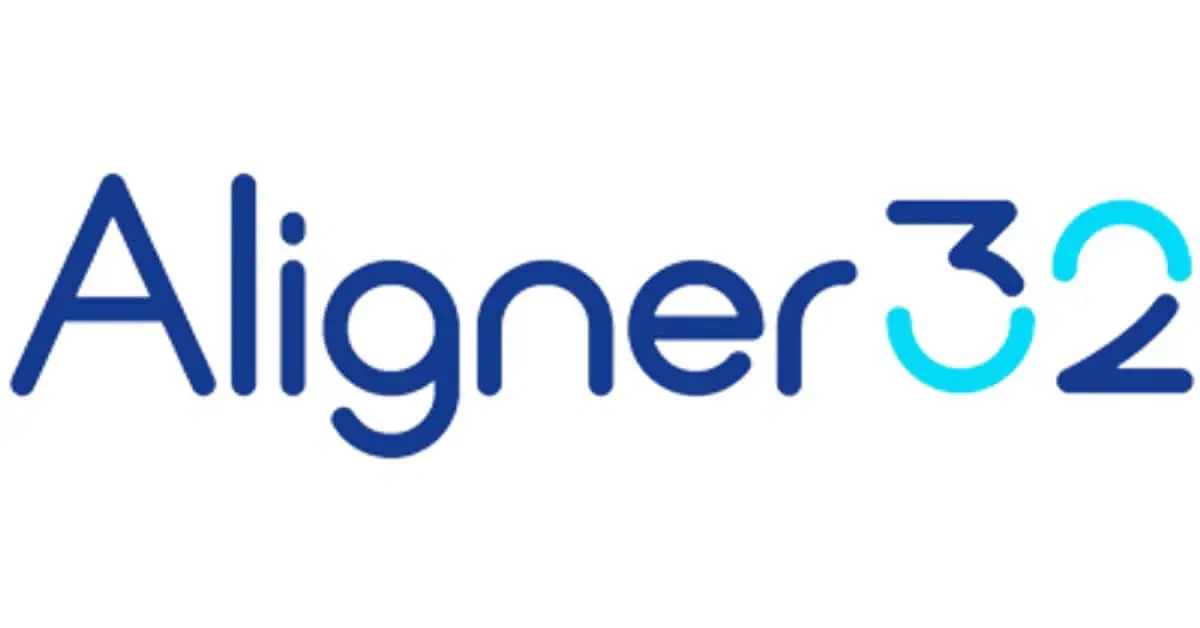A crossbite is a kind of dental misalignment where the upper and lower teeth don’t connect in the correct position when you bite. Dentists can usually spot one at an early age. They are likely to recommend fixing a crossbite with orthodontics because if left untreated, this condition can result in an uneven jaw and numerous oral health problems.
There are various crossbite treatments available, including elastics, braces and surgery. The recommended treatment for you will depend on whether you have a posterior or anterior crossbite, and how severe it is.
Keep reading to find out more:
- What is a crossbite?
- All the different types of crossbite
- How is a crossbite corrgected?
- What happens if you don’t fix a crossbite
- How it’s treated at different stages
- How much does jaw realignment surgery cost in the US?
We hope the information in this article helps you understand this condition better and seek the right treatment.
What is a crossbite?
Put simply, a crossbite occurs when the top teeth sit on the inside of the bottom teeth or when the upper back teeth overhang the lower teeth too far. The outward appearance of this condition can be an uneven or asymmetrical jaw.
This condition may be a result of genetic factors, such as overcrowded teeth, or behavioral factors, such as thumb sucking. Because there are lots of different ways in which a crossbite can occur, there are also lots of different terms used to describe crossbite teeth.
Types of crossbite
There are different ways to classify this condition according to how many teeth are affected, where they are in the mouth, and what position they are in. Here is a brief overview of the different terms used to describe a crossbite:
Anterior crossbite
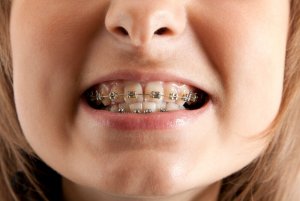

An anterior crossbite, also known as an underbite, affects the front of the mouth, meaning the upper front teeth rest behind the lower front teeth. There are a few different causes, including:
- Overcrowded teeth
- Mouth breathing as a child
- Thumb-sucking
- Repairs to cleft lips
Crossbites in front teeth can be quite noticeable, causing the chin to protrude or the jaw to look uneven.
Posterior crossbite
Posterior crossbites affect the back teeth. The upper teeth sit inwards from the lower teeth when they should be further out. This is caused by the same factors as anterior crossbites. Another contributing factor can be milk teeth falling out late, and adult teeth appearing in the wrong order and position.
Posterior crossbites can be really simple to treat, especially if caught early.
Buccal and lingual crossbite
These terms describe whether the teeth are too far out towards the cheek (buccal) or too far in towards the tongue (lingual). With either of these types, you can usually feel a lot of the biting surface of the inner tooth when you close your mouth.
Bilateral and unilateral
A bilateral crossbite diagnosis means that both sides of your mouth are affected, whereas a unilateral crossbite is on one side of your mouth. One of the more common diagnoses is a bilateral posterior crossbite with a functional shift. The treatment that you receive will probably look the same for these issues, but the mechanics of what your dentist does might be a little different.
Single tooth and segmental
These terms are a little bit easier to understand. A single tooth crossbite affects just one tooth. It can happen when a bottom tooth sticks forward too much (usually one of the front teeth or a canine) or when an upper tooth is pushed towards the inside of your mouth.
A segmental crossbite means that a few – but not all – of the teeth don’t line up. It will normally affect two or three teeth in a row.
Type of crossbite | What it means |
Anterior | Affects front teeth |
Posterior | Affects front teeth |
Buccal | Teeth positioned towards cheek |
Lingual | Teeth positions towards tongue |
Bilateral | Affects one side of the mouth |
Unilateral | Affects both sides of the mouth |
Single tooth | Affects one tooth |
Segmental | Affects just 2-3 teeth |
Options for crossbite correction
Dentists may have many terms to define this condition, but the treatment options are similar in most cases. Crossbite teeth treatment is best started in childhood when teeth and bones are much easier to move because they aren’t fused in place.
There is evidence which suggests that if crossbite braces treatment is started early, it’s up to 80% effective without other treatment being required.
Misaligned teeth are not just a cosmetic issue when it comes to oral health and wellness. Anytime teeth don’t fit together properly, abnormal wear and tear can occur on affected teeth along with jaw issues. Crossbite occurs when the upper teeth fit inside of lower teeth. This misalignment of teeth (or bone) can affect one tooth or many teeth. But, the greater worry is how it can affect the jaw.
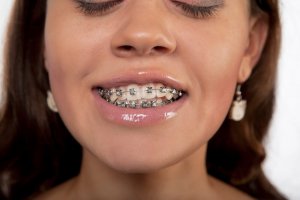

If a crossbite is not corrected, it can wear down the enamel of the tooth as the jaw shifts to the side. It can also cause lopsided jaw growth. Depending on how severe the crossbite is, treatment may incorporate a palatal expander, a fixed or removable orthodontic appliance used to make the upper jaw wider. Along with the expander, the patient would have an appliance like braces or clear aligners to move the teeth into proper position.
Dr. Travis R. Willey, Family and Cosmetic Dentistry of the Rockeies
How to fix a crossbite with braces
A very common way to treat both posterior and anterior crossbites is with braces. An orthodontist will explain the exact treatment that you need.
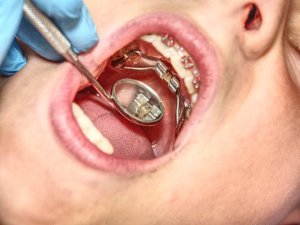

The most common type of crossbite braces use a palate expander. This is a device that works on widening the upper jaw so that the top teeth will sit properly with the lower teeth.
Palate expanders need to be adjusted regularly, and in small increments, they push the teeth further apart. There is a rapid expansion method that can achieve the right results within the space of a few months.
After the palate has been expanded to the correct size, there may be further teeth straightening required. Various kinds of permanent braces can be used for this. To continue to treat the crossbite after braces, teeth retainers will be needed to help keep the teeth in place.
How to fix a crossbite without braces?
Not everyone likes the idea of fixed, metal braces. Fortunately, there are alternatives that can be just as effective for many cases, such as invisible aligner braces or clear bracket braces. Do be aware that anything other than metal braces will most likely require private treatment; Medicaid and CHIP will most likely only fund metal braces.
It may also possible to treat a posterior crossbite with just elastics, which you can read more about further down.
Can Invisalign fix crossbite?
For patients with mild to moderate anterior or posterior crossbite, Invisalign clear aligner braces can be an effective treatment. This system has the benefit of being almost unnoticeable, with the added convenience of being able to remove the aligners for up to two hours a day.
In the following video, a patient shares an update of her journey with Invisalign for crossbite and crooked teeth.
Fixing a posterior crossbite with elastics
Crossbite teeth at the back of the mouth can sometimes be fixed with posterior crossbite elastics. This involves the orthodontist attaching a hook to the inside of the top tooth and the outside of the lower tooth, with an elastic band connecting them.
The point of this is to pull the back tooth outwards so that it will sit snugly over the lower tooth like it should. It is a pretty simple process that can take as little as three or four months.
Jaw realignment surgery


In more severe cases, surgery may be needed. Having an operation can be a worrying experience, but it is a reasonably common procedure. In cases where it is deemed medically necessary, Medicaid and CHIP will cover jaw realignment surgery for children, and in some states for crossbite correction in adults is covered as well.
Crossbite surgery will normally be preceded by a year to eighteen months of braces, and the removal of wisdom teeth, if you have any. This is necessary since the surgery to fix your asymmetrical jaw takes place at the back of your mouth.
In jaw realignment surgery, for adults or children, the jaw is broken and repositioned. Once this is complete, the surgeon adds plates and screws to hold it in place. The cuts are all done inside your mouth so there shouldn’t be any visible scarring.
Crossbite surgery recovery takes around six weeks for everything to heal and 12 weeks for a full recovery. Crossbite braces will need to be worn for a further 4-6 months.
To help calm any nerves you or your child might have, you can ask your dentist to show you pictures of crossbites before and after surgery. Seeing these should help you understand what the crossbite treatment results will be like.
How much does crossbite surgery cost?
This condition is normally treated in childhood, in which case it can be covered by CHIP or Medicaid.
But there can be reasons why you make it to adulthood and still have a unilateral or bilateral crossbite. Because of the problems that are associated with not receiving crossbite correction, you may be able to still get this treatment through Medicaid depending on the state you live in. It is worth speaking to your dentist about your options. Most private insurance plans will also cover part of the cost, which is important because the surgery can cost anywhere from $20,000 to $40,000.
What problems can a crossbite cause?
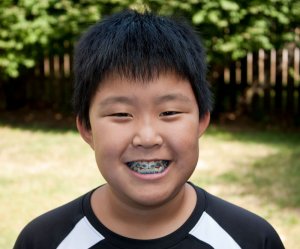

Crossbite teeth might not seem like a big problem aesthetically, but not getting the correct crossbite treatment can store up problems for later life. There are lots of problems associated with posterior and anterior crossbite, such as:
- Increased risk of tooth decay
- Gum disease
- Excessive wear on gums and teeth
- More chance of grinding teeth, or bruxism
- Cheek biting when trying to eat food
- Higher chances of headaches due to tension
- An asymmetrical jaw
Because of the risks that come without treatment, if you notice a crossbite in the baby teeth of your child, you should talk to your child’s dentist about treatment. It is likely that your child can qualify for free treatment on CHIP or Medicaid, and some adults will qualify on Medicaid. Our guide to Medicaid and Medicare dental insurance has more information on who can qualify for Medicaid and what it will cover.
Can you fix crossbite in adults?
It is never too late to get your teeth fixed and straightened.
All of the procedures mentioned here – braces, elastics, surgery – can all be used in posterior and anterior crossbite treatment in adults too. If being treated with braces, many adults opt for clear adult braces or invisible aligners like Candid, ALIGNERCO, NewSmile and Byte to make their treatment less conspicuous.
- Most affordable options
- Single and dual arch, day and night options
- Convenient AlignerTracker app
- Free teeth whitening
Aligner32 offers a convenient and affordable way for individuals to straighten their teeth using custom-fit clear aligners. Their service is designed for at-home use, allowing customers to avoid frequent orthodontist visits while still achieving professional-grade results.
Aligner32 provides two main treatment plans tailored to suit different needs:
- All-Day Plan: The All-Day Plan requires 22 hours of daily wear and offers faster results, with treatment lasting between 4 to 6 months.
- Night Wear Plan: The Night Wear Plan is ideal for those who prefer a more flexible routine, requiring just 10 hours of daily wear, typically at night, with a treatment duration of 6 to 8 months.
Both plans are designed to treat a range of orthodontic issues, including crowding, spacing, overbites, underbites, and crossbites.
With affordability in mind, Aligner32’s clear aligners are significantly less expensive than traditional braces, which can cost between $5,000 to $8,000. Customers can also use flexible payment plans, making it easier to manage the cost.
Additionally, Aligner32 offers a free teeth whitening kit with their aligner packages, making the treatment even more appealing. The company emphasizes comfort, convenience, and professional care, making it a popular choice for those seeking a better smile without the high costs and hassle of conventional orthodontic treatments.
- Complete treatment 100% remotely
- Amazing customer service
- Nighttime-only option
- $1,495 or $55/month
NewSmile aligners are made from the clearest Essix plastic and come with a daytime or nighttime-only option to suit you. For just $1,495 you’ll receive everything you need to straighten and whiten your teeth – and maintain your new smile:
- Home impression kit
- Full aligner treatment
- Free whitening
- First set of retainers
- A full refund if you’re not a good fit
NewSmile goes above and beyond to provide a great experience to all their customers, beginning with a live video call to help you with your teeth impressions. Mail these back, and they’ll send a 3D Treatment Preview for you to approve before going ahead.
- Smileie Pro offers hybrid treatment!
- Single-arch treatment option
- Nighttime aligners available
- Free refinements & 2 sets of retainers
- $699 (single-arch) or $999 (dual-arch)
Smileie’s aligner treatment is not only affordable, but flexible too. You have the option of Smileie Pro, which is hybrid treatment that involves in-office visits with a dentist.
That means more accurate, safer and effective treatment or a wider variety of cases.
But you can also opt for single-arch treatment for just your top or bottom teeth, as well as nighttime-only treatment. And whichever package you choose, monthly payments are available.
On top of this, Smileie offers a 100% satisfaction guarantee which includes free refinements if needed. Their aligners are made in the US and treatment takes 4-6 months on average.
Get Smileie Pro for just $1499, or —
Get the best discount on the standard plan, with 100% remote treatment, when you purchase your aligner package up-front, including:
- Home impression kit
- Teeth whitening kit
- Two sets of retainers
- A full refund if you’re not a good candidate
Packages start at $699 for single-arch treatment. Click below to check for current discounts!
- Complete treatment 100% remotely
- 4-6 month average treatment time
- Nighttime-only option
- $770 or $64/month
If you’re looking for the best value aligner package, here it is! For just $895 you’ll get:
- Impression kit
- Full aligner treatment course
- Free teeth whitening kit
- Your first set of retainers
In short, everything needed to straighten your teeth remotely and keep them looking great, with a full money-back guarantee if you’re not a suitable candidate.
This low price doesn’t mean you’re compromising on quality of care, though. ALIGNERCO just choose not to put so much into marketing, and they pass on the savings to their customers. They are also known for their responsive and helpful customer care, which is important when you’re doing things from home.
Nighttime-only aligners are also available for anyone who doesn’t want to wear aligners during the day.
Conclusion
Fortunately, this is a relatively straightforward dental problem to fix, and crossbite correction in children is a bit simpler to fix than adults. Listening to your dentist talk about crossbite fixes might seem intimidating, but if you don’t understand, it’s ok to ask questions. The treatment will pretty much always require having something fitted in your mouth, whether that be hooks for posterior crossbite elastics, braces, or metal plates during surgery.
FAQs
Does Invisalign fix crossbite?
In mild to moderate cases of crossbite, Invisalign may be a good option for those who want less obvious treatment. If your crossbite is severe, you may need to have treatment with traditional braces.
Can you fix crossbite without braces?
You can fix this condition without braces using Invisalign or similar styles of invisible braces. Sometimes jaw surgery is required to fix severe cases, but this also may be preceded by braces.
What is anterior crossbite?
Anterior crossbite is when your upper front teeth sit behind your lower front teeth, caused by force from the palate. It is also known as an underbite. Correction can involve braces and jaw surgery. Anterior crossbite treatment in children is the same as for adults.
The Angle Orthodontist: Long-term Stability of Unilateral Posterior Crossbite Correction. Consulted 27th May 2019 Mayo Clinic: Jaw Surgery. Consulted 27th May 2019 Science Direct: Crossbite. Consulted 27th May 2019





